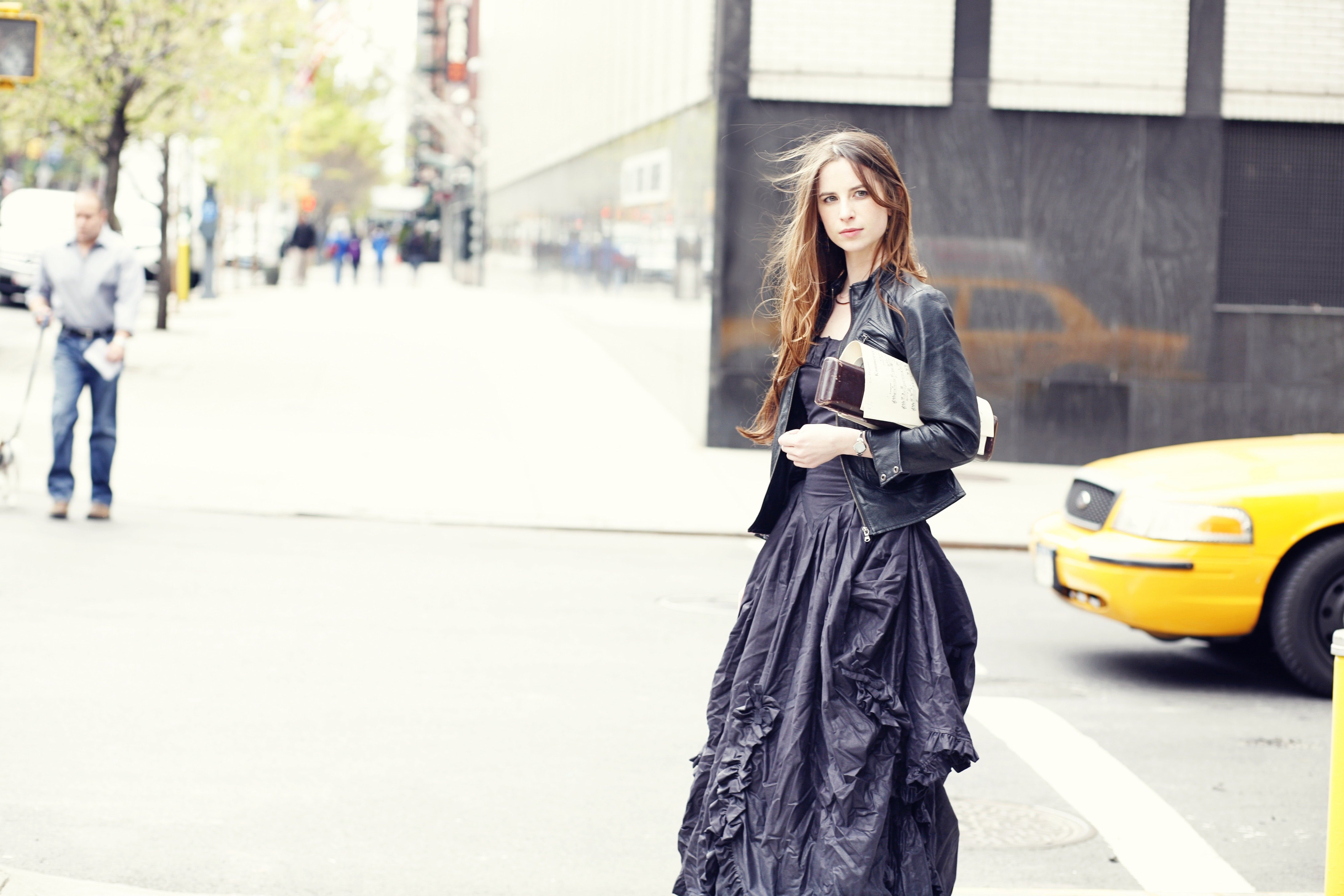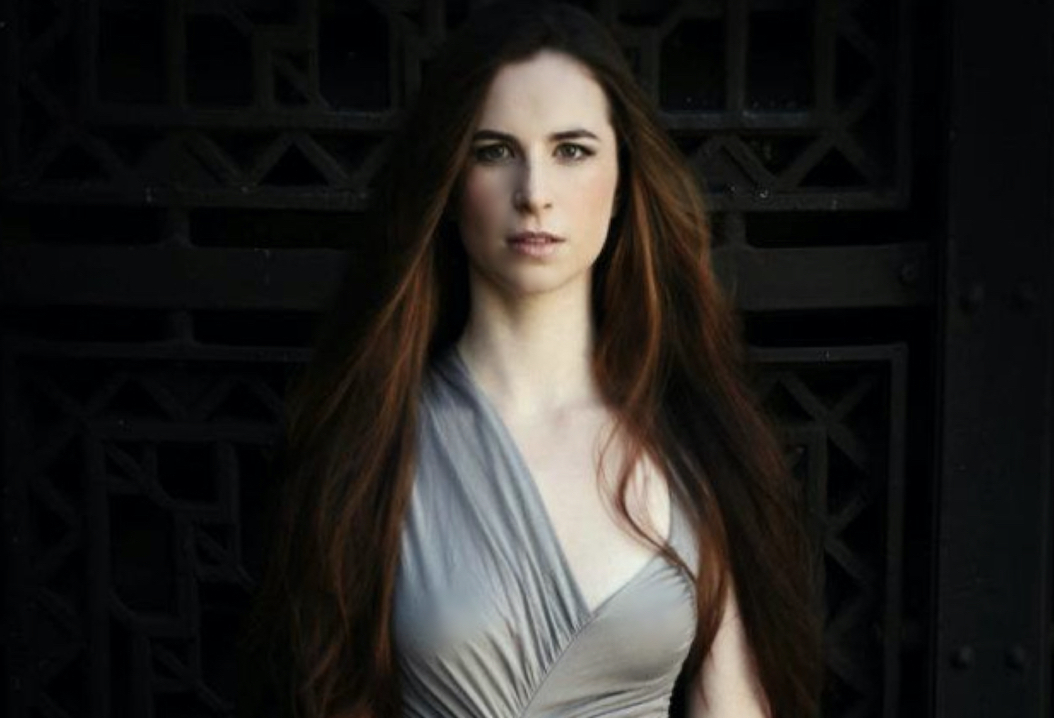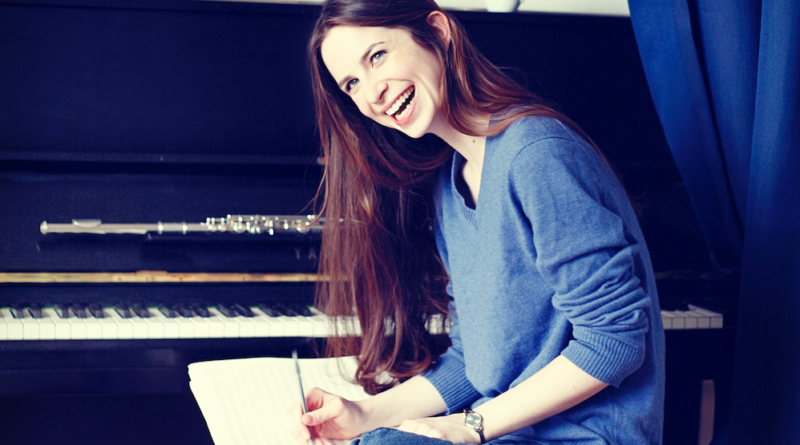How I Made the Billboard Charts by Emi Ferguson
This month we spoke with Emi Ferguson about her Billboard charting release, “Amour Cruel."
Emi Ferguson can be heard live in concerts and festivals around the world as well as at home in New York City where she is a member of AMOC*, the New York New Music Ensemble, NYBI, Argento Ensemble, New Vintage Baroque, and the Manhattan Chamber Players. Her debut album, Amour Cruel, released by Arezzo Music, spent 4 weeks on the Billboard Charts, and Emi has spoken and performed at several TEDX events and has been featured on media outlets including the Discovery Channel, Vox, and TouchPress apps talking about how music relates to our world today. Emi is currently on the faculty of the Juilliard School teaching Ear Training in the Evening and Pre-College divisions. Born in Japan and raised in London and Boston, she now resides in New York City. For more information please visit www.emiferguson.com
Viviana: Why the flute?
Emi: I don’t have a specific answer, but I do remember playing the recorder and piano when I was 3. Then one day when I was about 6, I said to my parents, I want to play the flute. And they were wonderful, and said, ok, and we went to the flute shop in London and got a flute and brought it home. The next week, before I even opened the flute, I got to go to a concert with Sir James Galway, and he was actually the one who showed me how to put the flute together.
V: Who did you study with?
E: Julie Wright in London started me out while I was living in England from 6-10. She runs all these flute camps that I continued to attend during my teen years, too. She developed such a beautiful flute community.
V: Did you continue with your piano?
E: I did continue, but I was always a very bad piano student. I would never perform on the piano now, put it that way.
V: Your bio says you were born in Japan?
E: Yes, it’s where my mother happened to be at the time. My parents were there for 10 years and I came along at the end of that period. I wish I had spent more time there. As a result, I have a Japanese name and all sorts of Japanese influences. I embrace the whole fact, diving into the literature, the music, the food.
V: Your upbringing was very international.
E: My mother is English and father is English born in Australia. So at that point in time, they were teaching Japanese as a second language. He had learned Japanese when he was quite young. He was offered a job in Japan because he spoke the language. We moved back to England and lived a quarter of the year in France where my mother’s family was. We moved to the states when I was 10.
V: Who did you study with at Juilliard?
E: From the moment I moved to Boston until I went to Juilliard, I studied with Julie Grant who runs the Boston Flute Academy, she was so incredibly important in my flute development. She prepped me for getting into Juilliard. I did my undergrad at Juilliard studying with Robert Langevin, my Master’s with Carol Wincenc and worked with Sandra Miller on Baroque flute.
Now I teach Ear Training at Juilliard in Pre-College and the Extension Divisions. That has been a gift that I never expected to have in my life. I was actually quite frustrated my first year in Ear Training. I was mentored by Mary Anthony Cox who taught at Juilliard for many decades. I learned her pedagogy that came from Nadia Boulanger, so now I get to work with a huge variety of age ranges and instruments.
V: What happened after you graduated?
E: I have been in NYC since then, which has been incredible. Teaching at Juilliard, and playing with a lot of different ensembles, some contemporary music ensembles, early music ensembles, and everything in between. I have been super fortunate to have been able to do a lot of different things.
V: Tell us about your album, Amour Cruel?
E: I was fortunate to be introduced to a niche of a niche called Aire du Cours which translates to Courtly Aires. They are these beautiful songs that were written and performed in the late Renaissance, early Baroque period. They are these absolutely stunning songs written for lute and voice. I was first introduced to these by William Christie, a specialist who has done so much work bringing these pieces back into people’s ears. I had always loved these songs. I had always felt that they were timeless. Very contemporary in regards to the text and the different harmonies. I was always intrigued about how I could make these songs a little bit more accessible to 21st century ears. So I went on this journey first looking at manuscripts to see what might be fun to “deconstruct." Taking just the melody, just the text, or just the bass line and using that as the foundational building block in order to build up something new but that pays homage to what was originally there.
It is kind of like “Chef’s Table”, where they have all these incredible chefs who will deconstruct this Mac and Cheese and then build it up into something crazy and new. I wanted to do a similar idea, but with music.
V: How did you come up with the idea for the music video?
E: I remember thinking, what do I need for this video? This was the first time anyone heard me singing, so I wanted to make sure that I was singing the words in the video, and not just playing the flute. It was totally scary. I didn’t even want to put myself in the video, but I thought if I don’t have myself in the video, people would think, that’s a cool song that you played flute on. So I wanted to make sure that people knew that I was singing, and doing all the arrangements. I thought this has to be somewhat obvious that it is me singing. I was thinking about that, and trying to come up with a really beautiful and striking image that sort of plays on the music and the words. I had this idea that I wanted to have this sort of giant red dress, and I would be floating in the lake near where my parents live, just because it was an easy location. So much developed because I had asked so many of my film making friends for ideas for what to do, and how much it would cost, and I kept getting these insane quotes that were very expensive and completely out of my budget.
I thought, what can I do using my own resources? I decided to sew together that giant red dress. It was crazy going to the fabric shops in New York, “no, I’d like MORE yards of this red fabric.” So I sewed it all together, it was absolutely huge and somehow shoved it into my Mini Cooper with 4 people, and all these bags, and my poor friends who joined us to help. It was crazy.
We all went up to New Hampshire where it was filmed. I had this idea that I would be on this floating dock in the middle of the ice in the middle of this lake. It would look like a red iceberg. I knew I needed to make the dress long enough to fall into the water. We shot it April 20th; it was still cold out there. The ice had turned into all these little icebergs everywhere. Nature had given us this beautiful gift. So that was super fun.

V: How did you figure out the video making process?
E: I had an incredible friend Yve Falanga, who is a family friend, who happened to be up there with us that weekend. I knew he was coming, and I also knew that he was very into cameras. So I persuaded him. I asked him if he would be up to film it. And he was so excited. He said, “I need two things, a drone and this other camera.” So we rented those, and the whole video cost $500 to do. It was one of those things that we didn’t really know what we were doing, but we got very lucky.
V: The video was done, then what happened?
E: I did all the editing and color editing of the video, which took me a while because for that, I was learning these video software editing programs from total scratch. What is amazing is that, is that it is very similar to audio editing but with an extra sense. You have to know how to line things up, and there is some level of intuition. I watched a lot of YouTube tutorials on how to use these editing softwares. It’s amazing what you can do to images.
V: How long did this take you?
E: I did this over a couple of months. We released the video in August.
V: How did you know that it was ready?
E: I don’t think you ever know that something is ready. I shared it with people whose opinion I really value, and at a certain point, I thought, I want to get it out there. I thought, alright, this is ready to get into the world.
V: You released it as an album?
E: Yes, I released it as an 11 song album with Amour Cruel as the title track. One of two songs in English, the rest of them are in this really beautiful old French. My album is available on all the platforms, Spotify, Apple Music, Bandcamp, Google, Amazon, all the streaming spots. We released it through my own record label, Arezzo Music, available on my website or at concerts. Between all those it’s been fun to reach a lot of people.
There are a lot of different ways of releasing an album. There is no one way of doing it. Especially now as the industry continues to grow and change. There are a lot of different routes to take.
V: So you pressed “publish." What happened from there?
E: The album was release on September 14, 2017. We did an awesome release party in New York, with everyone who had been involved with the record. They are totally my family. It was fantastic. Since then I’ve been performing it in a variety of locations. What has been fun is that every time I’ve performed it, it has been with a different ensemble, a different arrangement, from string ensemble, to string quartet, solo piano, violin, cello, piano, all these different versions which has been fun for me.
V: What do you have coming up?
E: Right now, I’m in California. We have been doing a few songs at a festival that I’m playing in. We are doing a few more on Tuesday, with the version for violin, cello, clarinet, piano. It’s a beautiful color.

V: What were the factors that enabled the album charting on Billboard?
E: There’s no one way to do any of this. It is sort of a combination of lots of different things. For me, it is that largely I had an incredible support system of people. Of course there is a lot of planning that goes into this to spread the word to get a project like this on people’s radar. I had a wonderful community of people who went out and bought the album. That’s what did it.
The album went to Billboard in mid to late September. I think it was a week or so that it hit the Billboard charts. I remember getting a phone call about it, and I was like, what? That’s crazy! And it was up there for about 4 or 5 weeks which was insane, more than what I would have ever expected.
V: Did you send press releases? Did you alert the media?
E: I didn’t! What is beautiful about today is that so much can be shared through social media. There are just lots of new ways to get the message out about new music. People are digesting music in ways that we have never had before. Both crazy and amazing.
V: When I graduated from Juilliard, there were "Gate Keepers." And you had to convince the labels and the managers that your music was worthy. They were the ones that made things happen. There was a ton of power given to those people and there was no distribution available outside of those pearly gates. Then it all came crashing down and now we’re living in a completely different world. Now, anyone can do as you just did.
E: Yes, I love it!
V: Yes, it’s empowering. It gives many more people opportunities. It used to be a very controlled thing.
So then you started touring with it. What are your plans for the future?
E: I just finished wrapping up recording a new album that will hopefully be released in 2019. A recording of the Bach continuo sonatas, but instead of doing them with just harpsichord or cello, but I did them with a 7 piece continuo band, so it’s doubling with baroque guitars, organ and harpsichord, cello and gamba, bass, baroque bassoon. I can’t wait to share it with everyone. It will bring a different perspective to these pieces that we all know and love.
V: Can you share with us 3 tips on how to become a successful musician?
E: I think the first thing is to believe in yourself and feel very convicted in what you believe in. But you also need to be well studied in order to back up the beliefs. For me that was having the incredible training from my wonderful teachers, so that when I wanted to go out and do something completely different, I could do it with all the foundations. Another thing that is important, is to really be curious, to listen to what is out there. To embrace your community, support others in your community and share with them what you are doing. We need each other if we want to bring this to wider audiences. My community seems to keep getting more fun branches on it. It is whatever you want it to be. What has been amazing about this project, is that it has made me much more open and vulnerable to be putting things out there that are totally my own. I have been so overwhelmed by the support I have gotten.
There are so many incredible musicians with amazing ideas. People need to know that, yes, follow your heart, even if not what you thought you would be doing when you were 5 years old, playing your instrument. It’s all totally fine. Share you passion with the world.
V: Anything else?
E: I have been very lucky that I have had wonderful teachers, and I have been exposed to many different types of music. I would just encourage people to be as open and curious as possible, to ask questions, never be shy to learn more.
V: Where does your inner strength come from?
E: Ha! Who said I have inner strength? I think for all of us, I think it comes from believing in what you’re doing. It took a while for me to get there. But I’m really happy.
V: We are all really happy for you too!
Emi Ferguson Links:
Amour Cruel Album
Emi Ferguson - vocals and flutes
Jordan Dodson - classical guitar, electric guitar
Paul Holmes Morton - theorbo, baroque guitar, and lute
Doug Balliett - baroque bass, electric bass, and viola da gamba
Samuel Budish - percussion
Music written and arranged by Emi Ferguson
Produced by Emi Ferguson and Patrick McMinn
Edited and Mixed by Emi Ferguson and Patrick McMinn
Recorded at The Bunker Studio by Todd Carder and James Krivchenia and at Staplechest Audio by Chris Botta
Mastered by Emily Lazar at The Lodge, assisted by Chris Allgood
Studio Assistant Percussion Producer Greg LaRosa
Assistant produced by Nicholas Csicsko
Compositions © 2017 Arezzo Music, BMI (tbd asap)
Album © 2017 Arezzo Records (tbd asap)
Album artwork by Ivanco Talevski
Photography by Yves Falanga
